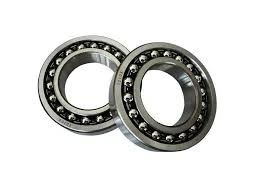
Nov . 23, 2024 15:17 Back to list
open deep groove ball bearing
Understanding Open Deep Groove Ball Bearings
Open deep groove ball bearings are essential components in mechanical systems, providing support and reducing friction between rotating parts. As one of the most widely used types of bearings, they come with various features and benefits that make them suitable for numerous applications across different industries.
Structure and Design
The design of an open deep groove ball bearing is characterized by its simple structure, which consists of an inner and outer ring, a cage, and balls. The deep grooves on both the inner and outer rings allow the balls to roll smoothly and accommodate radial and moderate axial loads in both directions. The open design means there's no protective seal or shield, which allows for easy lubrication and heat dissipation but can also make the bearing more susceptible to contaminants.
Applications
Open deep groove ball bearings are used in a myriad of applications, ranging from household appliances to industrial machinery. Common uses include electric motors, fans, conveyors, and automotive components. Their versatility stems from their ability to handle high speeds and loads while maintaining a low level of friction.
In the automotive industry, for instance, deep groove ball bearings are crucial in wheel hubs, transmission systems, and engines. In electric motors, they help reduce energy losses, enhancing overall efficiency. Their ability to operate effectively under varying conditions, including temperature changes and exposure to different environmental factors, makes them a preferred choice for many engineers and manufacturers.
Benefits
open deep groove ball bearing

One of the primary advantages of open deep groove ball bearings is their ease of maintenance. Since they are open, users can apply lubricants directly to the balls and races, prolonging the life of the bearing. Additionally, they tend to have lower operating temperatures, which is beneficial for performance and longevity.
These bearings are also relatively inexpensive compared to other bearing types. Their simple design translates into lower manufacturing costs, making them economically favorable for mass production. This cost-effectiveness, combined with their reliability, contributes to the widespread use of open deep groove ball bearings in various sectors.
Limitations and Considerations
Despite their numerous benefits, open deep groove ball bearings do have limitations. The open design, while facilitating easy lubrication, also allows contaminants like dust and moisture to enter, potentially leading to premature failure. Therefore, they are typically recommended for applications where exposure to debris is minimal, or where regular maintenance can be adequately performed.
When selecting deep groove ball bearings, it is crucial to consider factors such as load capacity, speed rating, and material. Different materials can provide varying levels of resistance to corrosion, fatigue, and wear, affecting the bearing's overall performance and lifespan.
Conclusion
Open deep groove ball bearings play a vital role in enhancing the efficiency and functionality of countless machines and devices. With their simple yet effective design, they offer an excellent balance of performance and cost-effectiveness, making them an indispensable component in modern engineering. Understanding their features and applications can help designers and manufacturers make informed choices to optimize their systems, ultimately leading to improved reliability and performance in various mechanical applications.
Latest news
-
Premium Deep Groove Ball Bearings | High Speed & Reliability
NewsAug.29,2025
-
Durable Scaffolding Clamps - Secure & Reliable Tube Connectors
NewsAug.28,2025
-
Common Failures in Thrust Ball Bearings and Solutions
NewsAug.22,2025
-
How Tapered Roller Bearings Can Take Shock Loads
NewsAug.22,2025
-
Angular Bearings in High-Precision Spindles
NewsAug.22,2025
-
The Impact of Misalignment on Cylindrical Roller Bearing Performance
NewsAug.22,2025
